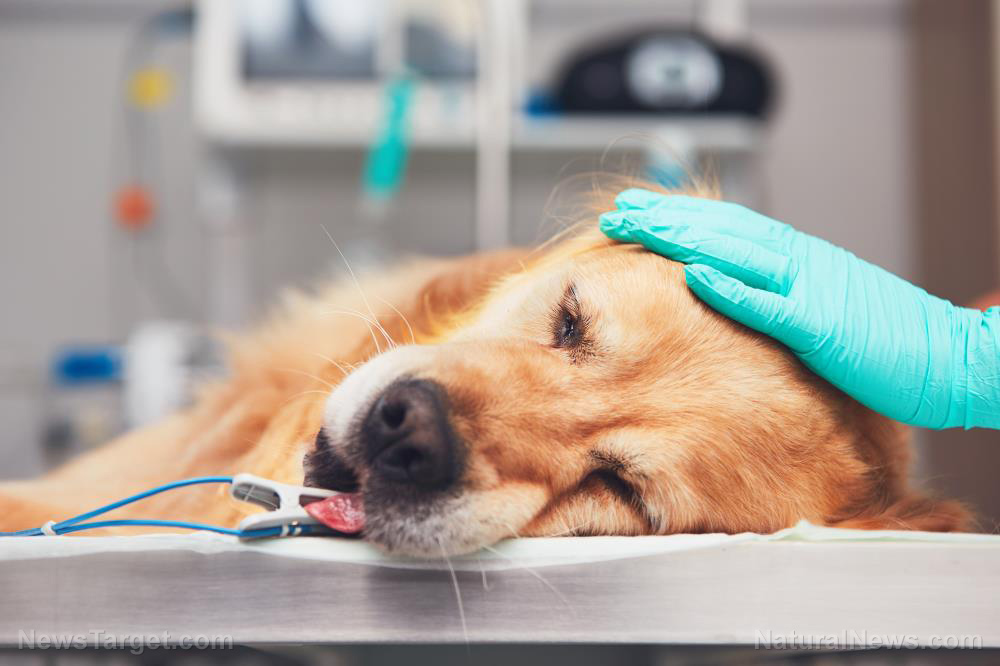Facial hair and hygiene: Are men’s beards filthier than dog fur?
10/25/2019 / By Grace Olson

Men’s beards contain more potentially infectious microbes than dog fur, a small study has found. Researchers from Europe stumbled upon this discovery while examining the safety of dogs using the same MRI scanners as humans. They published their findings in European Radiology and asserted the need for better hospital sanitation.
Beards versus dog fur
It began with routine pet check-ups. Pet owners wanted to ensure that their pets did not have any brain or spine disorders. Since most veterinary clinics could not afford MRI scanners, pet owners scheduled these appointments at hospitals instead.
In the hospital, there are MRI scanners designated for both animals and humans, and MRI scanners exclusively for humans. The researchers wanted to find out if using the same MRI scanner as a dog posed any health risk on the next person using it.
The researchers took samples from 18 bearded men (18 to 76 years old) and 30 dogs (varying breeds).
For dog samples, the researchers swabbed each dog’s mouth to check bacteria content. They also gathered fur samples from between each dog’s shoulder blades. This is where skin infection commonly appears in dogs. After their MRI scans, the researchers also swabbed the MRI scanner for samples.
As for their human subjects, the team took samples from the beards of men who were scheduled to have an MRI scan. All human subjects were relatively healthy; none of them had been hospitalized in the previous year.
The researchers compared the presence of colony-forming units of human-pathogenic microorganisms in all the samples. They also checked the extent of bacterial contamination between MRI scanners for dogs and humans against MRI scanners exclusively for humans.
Their findings revealed that the samples gathered from the men’s beards had significantly higher microbial counts compared to the dogs’ samples. All men had high microbial counts on their skin and saliva, whereas only 23 of the dogs had high microbial count. The rest of the dogs had moderate amounts. The researchers also found more human-pathogenic microorganisms in the men’s beard (seven out of 18) than in the dogs’ furs (four out of 30).
More strikingly, the MRI scanners used by both dogs and humans had lower bacteria count compared to MRI scanners used by humans only.
“As the MRI scanner used for both dogs and humans was routinely cleaned after animal scanning, there was substantially lower bacterial load compared with scanners used exclusively for humans,” the researchers explained.
Humans, HAI, and hygiene
The study’s findings confirmed that dogs did not pose health risks to humans even if they used the same MRI. Additionally, the study shone a light on a more crucial issue instead.
Because the MRI scanners used by dogs were routinely cleaned, they had lower bacterial count. The MRI scanners for humans, however, showed the opposite, raising questions on hospital sanitation and human hygiene. (Related: Contaminated hospital bed sheets could be the source of infections among patients, reveals shocking new study.)
The researchers pointed out that approximately 1.7 million patients suffer from healthcare-associated infections (HAI) each year. According to the Centers for Disease Control, around 99,000 of those cases ended with death.
The team asserted that the study was not a criticism of beards. There was no evidence to show that women had lesser bacterial count after all. Instead, they highlighted the need for hospitals to have better sanitation practices in order to decrease HAI cases.
Such practices include:
- Healthcare providers always washing their hands before and after handling each patient
- Catheters used only when necessary and removed immediately when no longer needed
- Cleaning the skin where the catheter was inserted
- Proper usage of hair covers, masks, gowns, and gloves
“The central question should perhaps not be whether we should allow dogs to undergo imaging in our hospitals,” the researchers pointed out, “but rather we should focus on the knowledge and perception of hygiene and understand what poses real danger and risk to our patients.”
Learn more about proper sanitation and good hygienic practices at Health.news.
Sources include:
Tagged Under: beard hygiene, HAI, healthcare associated infections, hospital sanitation, human hygiene, infections, medicine, men's health, MRI scans, pet health, pet MRI scan, prevention, proper hygiene, research, sanitation practices, science
RECENT NEWS & ARTICLES
COPYRIGHT © 2017 PET HEALTH NEWS


















